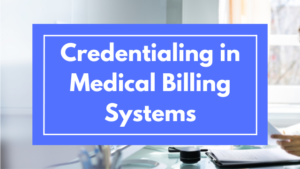
Straight-Through Billing
Medical billing complexity and massive volumes of daily claims render manual claims processes incapable of protecting both the provider and the payer from underpayments, overpayments,

Medical billing complexity and massive volumes of daily claims render manual claims processes incapable of protecting both the provider and the payer from underpayments, overpayments,

When patients miss appointments, they interrupt the flow of patient care, impede clinic productivity, and signal an eroding patient loyalty. The rate of no-shows runs

Update – March 29, 2024 We understand the challenges the Change Healthcare outage has brought, especially with delayed payments and confusing updates. Here’s how we’re

What is outcomes-based compensation in healthcare? Compensation plans in the healthcare industry have undergone a paradigm shift, with more providers moving away from volume-based to

Credentialing in medical billing is crucial for ensuring patient safety and maintaining the quality of care provided by healthcare providers. This process involves verifying providers’

People handle adversity differently; some break down sooner than others. When a team focused on a common goal faces adverse conditions, dissent among some team

ClinicMind introduces Live Chat for real-time client support, enhancing convenience and issue resolution. New features like Incoming Fax Queue, Roster Check-in, and image chart components

Effective denial and appeal management is essential for private practices, with studies showing that up to 90% of insurance denials are preventable. Common reasons for

Health insurance audits can be daunting for private practices. Auditors aim to ensure correct billing and proper claims handling. Audits can be routine or event-triggered,

Analytics play a crucial role in optimizing insurance management for private practices and healthcare providers. Monitoring approvals, denials, and appeals provides valuable insights. Identifying the

The health insurance landscape is continually evolving, posing challenges for healthcare providers. To stay updated, practitioners should read industry news and share vital updates within

Creating a profitable and fair fee schedule is crucial for private practices. It should cover true service costs, not just insurance reimbursement. Align your rates
PO Box 352
2840 West Bay Drive
Belleair Bluffs, FL 33770
This site includes cumulative user rating numbers, video testimonials, press releases, and other social proof materials across all brands and all resellers leveraging ClinicMind Software and/or Service as a Platform (SaaP). For more detail about our white labeling and reselling models, visit our About Page or Contact Us directly. Check Privacy Policy